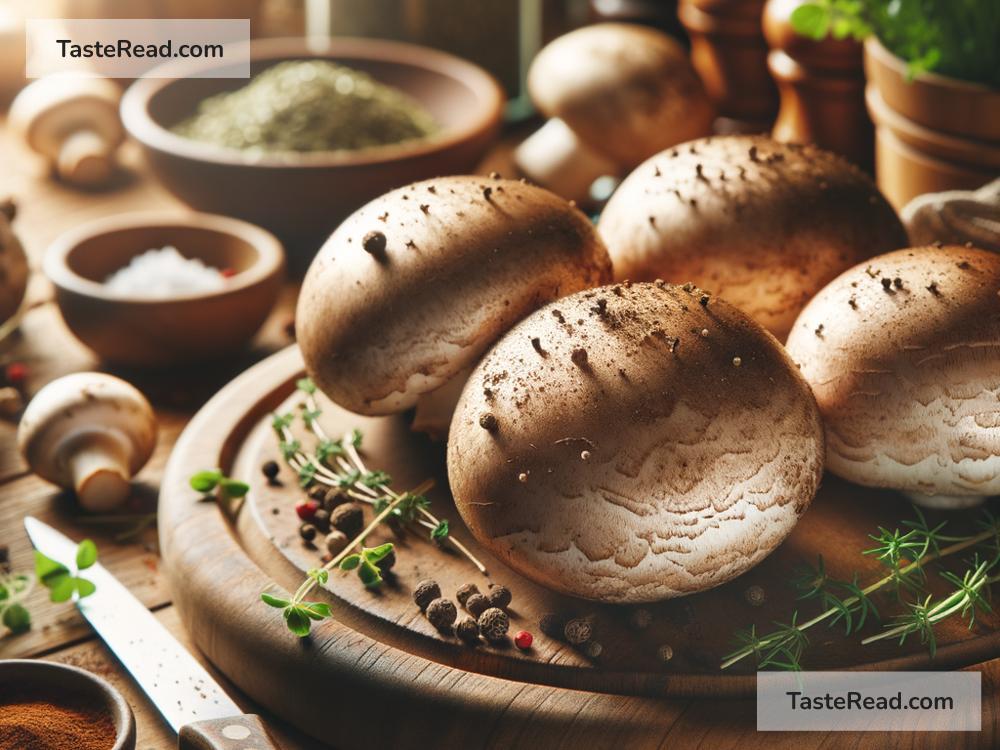The Science Behind the Earthy Flavor of Mushrooms
Mushrooms are fascinating, aren’t they? These incredible fungi have been beloved by chefs and home cooks for centuries. Whether sautéed in butter, tossed into a stir-fry, or blended into a savory soup, mushrooms add a unique “earthy” flavor to dishes that is unlike anything else. But have you ever wondered where this earthy taste comes from? Let’s dive into the science behind the flavor of mushrooms—explained in simple English!
What Is an “Earthy” Flavor?
When people describe the taste of mushrooms, “earthy” is often the first word they use. But what exactly does “earthy” mean? It’s that deep, rich, grounded aroma and taste that reminds you of the forest floor after rain. It’s not sharp, sweet, or spicy—it’s subtle, like the smell of damp soil or rotting leaves. That earthy flavor makes mushrooms stand out and turns them into a versatile ingredient for so many dishes.
The earthy flavor arises from a combination of mushroom chemistry, their growing environment, and the natural compounds they produce. Let’s break it down step by step.
Mushrooms and Their Growing Environment
Mushrooms are fungi, not plants. Instead of relying on sunlight like plants, they grow by breaking down organic material in the soil, such as dead leaves, wood, and nutrients found in decaying matter. This process happens underground, where fungi form interconnected networks called mycelium. Mycelium acts like a super-highway, gathering nutrients and releasing enzymes to digest materials in the soil.
Since mushrooms grow so close to the earth and depend on decayed organic matter for nutrients, they absorb many compounds from their environment. These compounds, along with the mushrooms’ own unique chemistry, contribute to their deep, earthy flavor. Essentially, the taste of mushrooms is connected to the soil they come from.
The Key Compound: Geosmin
One of the chemicals responsible for the earthy flavor of mushrooms is called geosmin—a name derived from the Greek words “geo” (earth) and “osme” (smell). Geosmin is a naturally occurring compound that smells like moist soil or fresh rain. You know that distinctive “after-rain” smell when you go outside? That’s largely because of geosmin, which is produced by certain bacteria in the soil.
Some mushrooms, such as portobello and button mushrooms, absorb geosmin while growing and incorporate it into their chemical makeup. This is why many people think of mushrooms as smelling and tasting like the earth. Geosmin is also present in other earthy foods, like beets and catfish, but mushrooms really highlight this compound thanks to their natural fungal biology.
Umami: The Fifth Taste
Mushrooms don’t only taste earthy—they’re also packed with umami, the savory flavor that makes dishes so delicious. Umami is considered one of the five basic tastes, alongside sweet, salty, bitter, and sour. It’s responsible for that rich, mouthwatering sensation you get when eating foods like cheese, meat, soy sauce, or ripe tomatoes.
The umami taste in mushrooms comes from two key compounds: glutamate and ribotides. Glutamate occurs naturally in mushrooms and activates specific taste receptors on our tongues. Ribotides, like guanylate and inosinate, work alongside glutamate to amplify the savory flavor. Together, these compounds create a layered profile that makes mushrooms not only earthy but also incredibly satisfying to eat. This is why mushrooms are often a go-to ingredient for vegetarian recipes—they mimic the rich, meaty flavor of animal protein.
Volatile Organic Compounds (VOCs)
Another fascinating part of mushroom flavor comes from volatile organic compounds (VOCs). These are molecules that evaporate quickly and contribute to aroma. Mushrooms contain various VOCs, including alcohols, esters, and sulfur compounds, which give them that distinct mushroomy smell.
One important VOC in mushrooms is 1-octen-3-ol, nicknamed the “mushroom alcohol.” This compound contributes to the characteristic aroma that many people associate with fresh mushrooms. If you’ve ever cut into a mushroom and noticed a strong scent right away, you’re smelling 1-octen-3-ol in action. It’s part of what makes mushrooms so aromatic and flavorful.
Why Do Different Mushrooms Taste Different?
Not all mushrooms taste the same. Some are mild and delicate, like white button mushrooms, while others, like shiitake or oyster mushrooms, have bolder and more complex flavors. This variation comes from differences in their chemistry, environment, and species. For example:
- White button mushrooms have a mild taste because they contain fewer VOCs and umami compounds.
- Shiitake mushrooms are rich in guanylate and boast strong umami flavors.
- Truffles, the prized fungi that grow underground, contain unique VOCs that make them taste and smell intensely “earthy” and almost musky.
The way mushrooms are grown also affects their flavor. Wild mushrooms, like chanterelles and porcini, often have stronger flavors because they grow in natural forest environments where they absorb more diverse compounds. On the other hand, cultivated mushrooms are grown in controlled conditions, which can make their flavor more consistent but slightly less intense.
Conclusion: A Taste of Nature
The earthy flavor of mushrooms is one of nature’s most delightful gifts. It’s the result of geosmin, umami compounds, VOCs, and their direct connection to the soil they grow in. The next time you enjoy a plate of sautéed mushrooms or bite into a hearty mushroom soup, you’ll know that the science behind their flavor is rooted in the earth itself.
Mushrooms truly are nature’s way of bringing the taste of the forest into your kitchen. So go ahead—experiment with different mushroom varieties and savor that earthy, umami-rich goodness. You’re not just eating food; you’re enjoying a little slice of nature’s chemistry.


